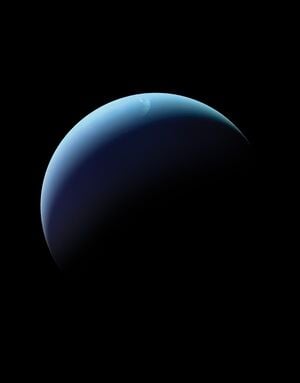Forum:Titania (system)
From Destinypedia, the Destiny wiki
| Forums: Index → Fan Fiction → Titania (system) |
| Titania (system) | |
|---|---|

| |
| Astrographical | |
|
Star, position: |
Taishibeth, I |
|
Satellites(s): |
5000+ |
| Physical | |
|
Diameter: |
62500 km |
|
Gravity: |
3.8 g |
|
Length of day: |
72 hours |
|
Orbital period: |
10,000 - 20,000 |
|
Atmosphere: |
Predominant: |
|
Surface temperature: |
300 K |
| Societal | |
|
Titano | |
|
Species: |
Crystalien |
|
Population: |
80 billion sophonts |
|
Government: |
Hierarchy of Hierarchies |
| “ | The mystery of a thousand thousand lifetimes. | ” |
Taishibeth is a rogue Super-HydroJovian world in the eponymous Taishibeth system, erroneously classed as a double-system. It was discovered by the Argus array twenty years after the Second Collapse, but no expeditions has been sent to it as of yet.
Overview
Local star
Taishibeth orbits a white dwarf star eponymously named Taishibeth. No other planetary bodies have been detected. A major ring system of Hadaen, Cerean, and Vestian planetoids numbering in the upper billions orbits out at between four to five astronomical units and spans an AU in relative length.
Orbital position
It orbits its primary at a distance of eight hundred astronomical units, 120 billion kilometers at its greatest major semi-axis. It has an eccentricity of 0.7, an inclination of 35°, and an argument of periastron of 150°. It has an orbital period of between 10000 and 20000 Terran years and a rotational period of 72 hours. It is the only major planetary body of the Taishibethi system.
Planetary system
It features an extensive ring-system stretching approximately four hundred million kilometers (2.673 AU) in diameter. Gaps in the ring system indicate the orbits of numerous satellites, over two hundred of which rival, or are double, the size of Mars; the rest average from between several dozens of kilometers to mere centimeters.
Two civilizations have arisen within the system, the Crystalien Hierarchy of Hierarchies within the depths of the Jovian itself, and the chthonic Hiver species upon Oberon.
Satellites
- Oberon: the second largest and most closest of these satellites, measuring at 6000 kilometers in size, it is tectonically active and possesses a sulphurous atmosphere. It is especially rich in volatiles. It is approximately four hundred thousand kilometers from Titania.
- Peasblossom: similar in composition to Oberon, it is another world just shy of 5,000 km. It possesses no atmosphere but features active cryovolcanoes shooting volatiles from the subglacial ocean. It has great quantities of organic compounds and material. It is approximately sixteen million kilometers from Titania.
- Cobweb: a tiny world of barely 2,000 km, it is locked in a Trojan orbit with Moth. It has little significance apart from a subglacial ocean system and groups of methane lakes on the surface.
- Moth: the smallest of the five moons, it is in a Trojan orbit with Cobweb. It is rich in minerals and useful material for orbital construction. It possesses no atmosphere and is approximately fifty million kilometers from Taishibeth.
- Mustardseed: originally misclassed as a rocky world due to its great distance, further expeditions showed that it is in fact a miniature Jovian in orbit around Taishibeth of almost 14000 kilometers in diameter, or a third of Taishibeth’s observed size, and has cleared a gap of nearly two hundred thousand kilometers in the rings, the largest yet, and is approximately seventy five million kilometers from Taishibeth. There are no signs of life recorded anywhere on the planet. It possesses two moons.
- Puck: a tiny orbital, measuring twenty-odd kilometers in size, and has the appearance of 67P/C-G.
- Ghosh: another tiny orbital, measuring twelve kilometers, lumpy and pitted with craters.
Orbitals
- Obelisk: an ancient artifact of xenosophont origin, believed to have been left by the Traveler as a marker for a return visit. It is a lengthily object measuring twenty kilometers in size and is totally black, emitting nothing on the infrared or electromagnetic scales.
Physical characteristics
Taishibeth's atmosphere is predominantly hydrogen with trace elements of nitrogen, oxygen, methane, ammonia and argon making up less than five percent of the total. It has a relative Jovian mass averaging 12.5, suggesting that it is close to that of a Y-type, or ultra-cool, brown dwarf; its physical size is actually five times Earth's radii.
It has an average surface temperature of 300 Kelvin, or a warm summer’s day of approximately 80° Fahrenheit. It is colder towards the poles and warmer towards the equator, made possible by immense and violent windstorms that consume the planet. The planet’s physical coloration is a brilliant sky-blue from Rayleigh scattering and has an albedo of 0.12.
Internal characteristics
to be expanded
History
to be expanded upon